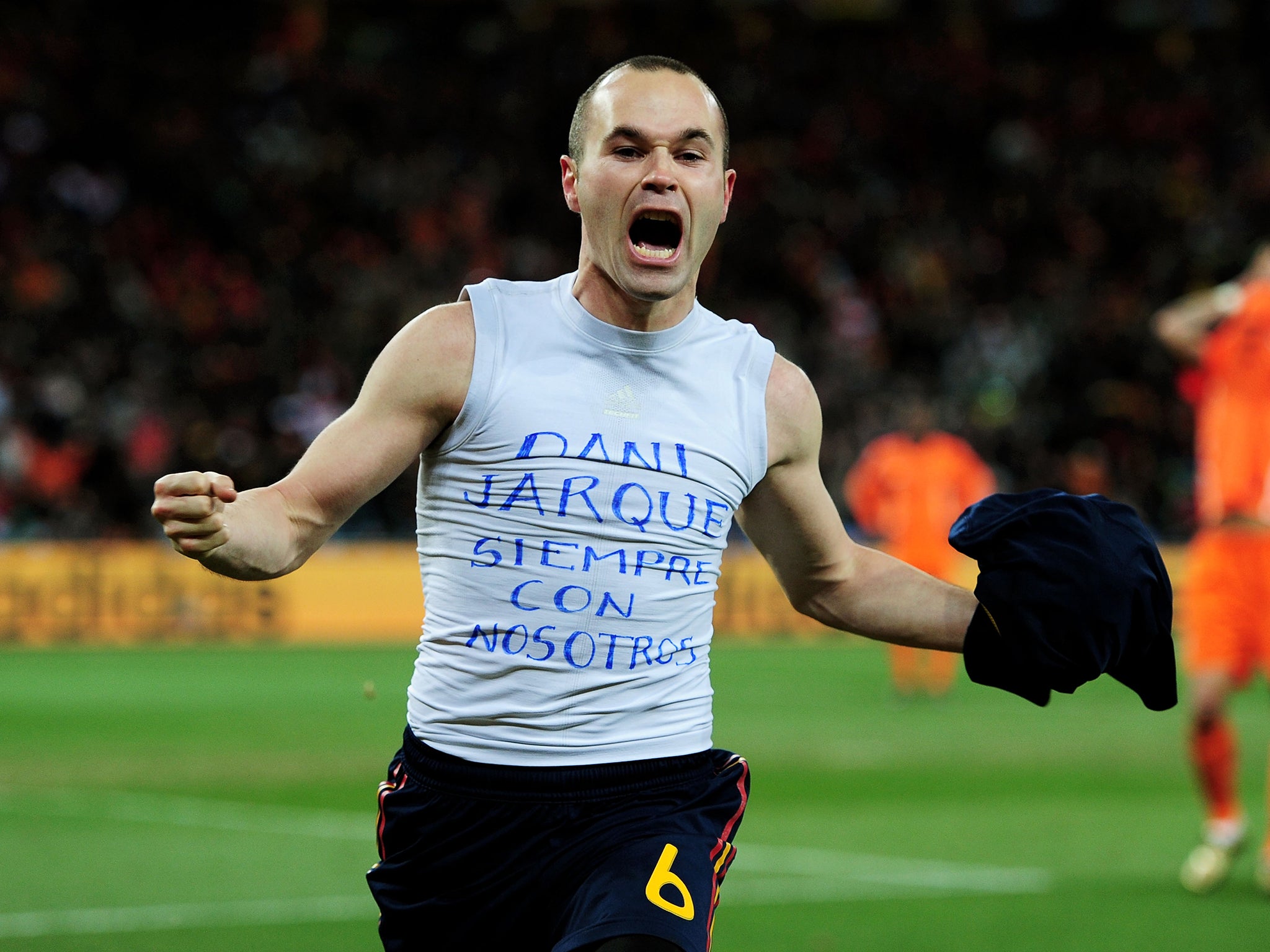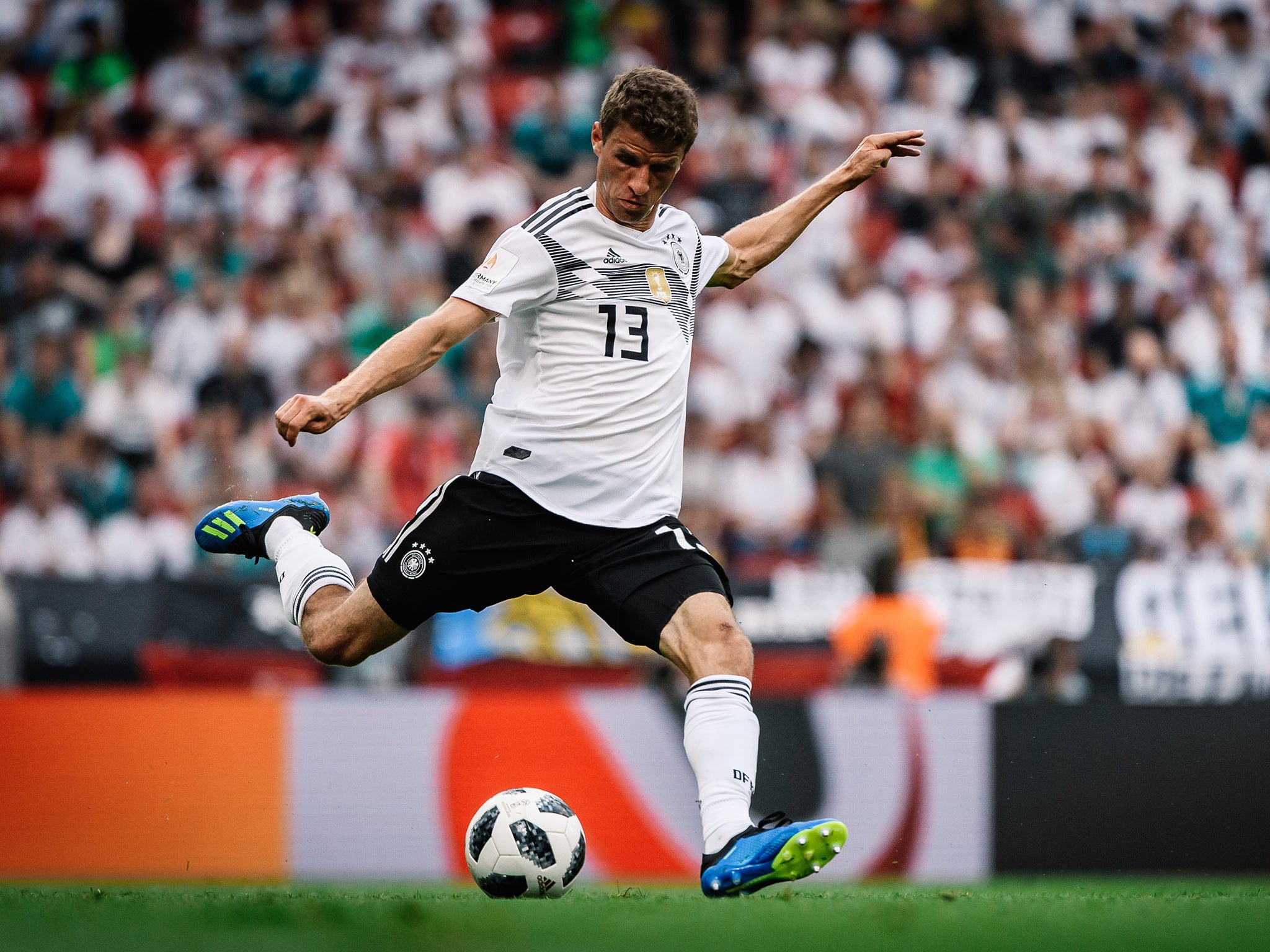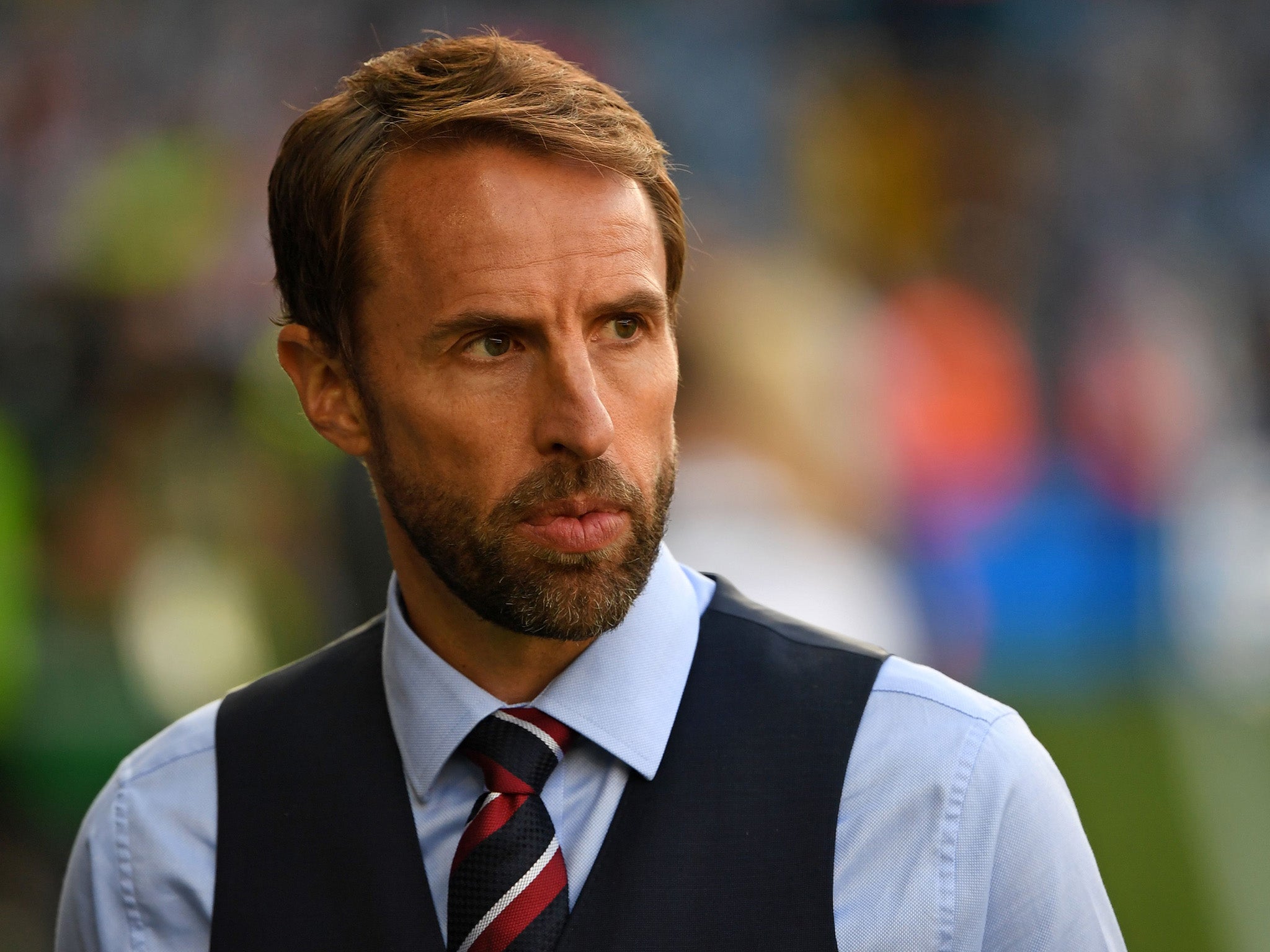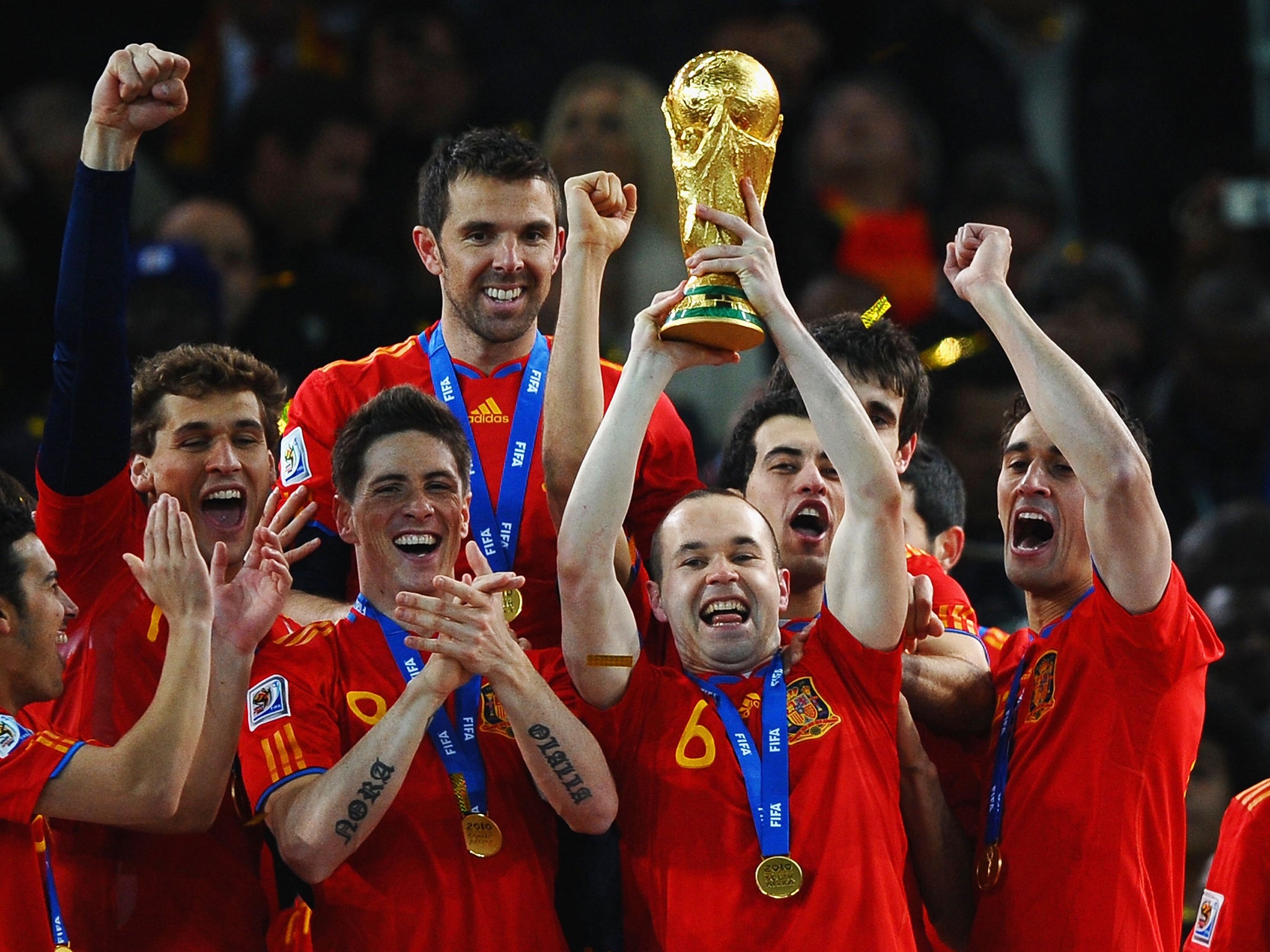World Cup 2018: How the likes of Andres Iniesta and Thomas Muller helped industrialise youth coaching
Where Spain and Germany have already triumphed, the likes of France and England look set to follow in what is quickly becoming the most competitive top tier of football we’ve ever seen

Your support helps us to tell the story
From reproductive rights to climate change to Big Tech, The Independent is on the ground when the story is developing. Whether it's investigating the financials of Elon Musk's pro-Trump PAC or producing our latest documentary, 'The A Word', which shines a light on the American women fighting for reproductive rights, we know how important it is to parse out the facts from the messaging.
At such a critical moment in US history, we need reporters on the ground. Your donation allows us to keep sending journalists to speak to both sides of the story.
The Independent is trusted by Americans across the entire political spectrum. And unlike many other quality news outlets, we choose not to lock Americans out of our reporting and analysis with paywalls. We believe quality journalism should be available to everyone, paid for by those who can afford it.
Your support makes all the difference.Back in the 2010 World Cup, before Andres Iniesta had scored the winner in the final but while he was still suffering the injury problems that would make that moment more wondrous, one leading figure in European youth football spotted something so specifically special about the playmaker’s game. The Barcelona star would always position himself so that he was an equal distance from all the opposition players around him. It meant that even if he was not at his physical maximum, as was the case for much of that World Cup, he still had the maximum space and opportunity to escape.
“That’s peripheral vision,” the figure noted. “That’s instinct. You can’t teach that.”
You can teach something similar, though, as the figure points to another example that is highly relevant ahead of Russia 2018. It was in qualification for the last World Cup, when eventual champions Germany battered Ireland 6-1, but got so many goals from the same source of attack. Thomas Muller kept making a particular run that would instantly take four Irish players out of the game.
“That comes from someone showing him how to make that run, and why. He’s been taught that.”
The relevance of these details being relayed goes beyond the fact that these were key players in the last two teams to win the World Cup, and are still there among the favourites for this one. It is the reason those two teams are once again favourites: that elevatory combination of talent and coaching, but applied to elite levels.
Because, while there is naturally so much emphasis on the big stars that could decide this World Cup, it is instead more likely to be defined by the systems that produced those stars.
One of the themes of the build-up has already been how the most fancied six-to-eight sides might well represent the strongest top tier the competition has seen in decades.
That is because a core of countries have now effectively – and expertly – industrialised youth production. That is especially the case with Germany, Spain and France, but their example has spread.
The result is these resoundingly deep squads in Russia, where the second XIs of those three countries could quite easily get to the quarter-finals themselves. It is likely to be to one of the most influential factors this summer, and could well create some knife-edge knock-out games later on.
While we have reached a situation where it feels like there are minimal differences between the elite squads, their routes to this point have been different, although there has been overlap.
It was the French who first displayed the benefits of properly thinking about your football structure with the Clairefontaine generation, but by the time that initial jour de gloire arrived at the Stade de France in 1998, Spain by then already had in place structures that would make it seem outdated. Spanish success a decade later would certainly outstrip France’s, as La Roja won the international hat-trick of trophies that eluded Zinedine Zidane's team.
Some in Uefa put this primarily down to the quality of the academies at La Liga clubs – particularly Barcelona – as well as the huge and almost unique groundswell of technique created by the immense popularity of Football Sala in the country. It is a form of football seen as perfect for developing tactical versatility and technical skills. The federation has also sought to maximise all this. Former youth supremo Gines Melendez put in place a set-up where, every summer, the best 55 players aged 14 to 15 would be brought together for the most modern and holistic schooling – both in football and pure educational terms. The clubs were persuaded to release these players for three days a week, creating highly cohesive groups, and so many title-winning underage sides that saw so many of the eventual senior champions play together.

When Melendez was repeatedly asked about the future of Spanish football in the wake of the 2010 World Cup win, he confidently asserted: “Don’t worry, we have all the reinforcements ready and waiting.” So, now, Iniesta is already set to be succeeded by Isco. Instinctive talent is then properly integrated.
“We drill certain moves into them until they become automatic,” Melendez said in Graham Hunter’s book ‘Spain’. “The boys arrive with plenty of talent, but we have to give them order. Technical ability takes time to perfect and it’s fundamental to what we do. You can’t play the way we do without the technical side being perfect, they need to know instinctively where to move within the team.
“It’s like a training pyramid - it starts at age 15 and goes on from there.”
The Spanish system was one of many the German federation studied in the highly necessary reboot of their methods at the turn of the millennium, as part of exhaustive research, where little expense was spared.
This is what stands out with the defending world champions. Europe’s most powerful economy essentially poured that into their football, in a way no one else can, to create one of the most powerful production lines. It is estimated that well over €1bn has been spent on coaching youth in Germany since 2001, with €120m annually going on grassroots alone. There is of course incentive for the clubs to invest in this, too, as they receive €1m every time a player appears in the Bundesliga. It creates a perfect loop, as well as perfectly coached players, who display the kind of game intelligence that Müller has.
"It all comes from the better technique the players have," former under-21 manager Horst Hrubesch told The Independent. "This gives them the opportunity to act quicker on the pitch."

France has quickly caught up again, though, although certain circumstances have played into their hands. The area around Paris is said to have the perfect socio-economic pillars for fostering footballers. That has made it the most productive area in the world right now – and responsible for the strength of a fair few other World Cup teams through migration – but even that has naturally been honed and shaped by excellent state structures and then the outlook of the professional clubs. There is such a clear pathway for young players in France that finishes with ample opportunity for first-team football. There are also 30,000 coaches working in the greater Paris area alone, one for every seven registered players.
This is especially important.

Uefa sources say the governing body has invested millions in studying what the best possible parameters are to produce players – from factors as detailed as size of town, size of family and physical size at certain ages – but have found there are still far too many variables for anything remotely precise. What they can categorically prove is that if you have the right level of coaching, clear structures and a base number of kids, you are guaranteed to produce talent.
None of these are as simple as they might seem, mind. There are naturally different interpretations.
In Portugal, Spain and Serbia, the coaches are not even allowed onto the grass with certain levels of young player unless they have a Uefa A-licence. That isn’t the case in England until much later in players’ development, because other attributes are concentrated on.
England football is of course one of the few countries that can match Germany in terms of the figures – both as regards financial resources and population – and the FA have already taken the necessary steps to overhaul youth production. That has been indicated by their recent underage success, and has led to a lot of talk around the top levels of European coaching that it won’t be long until senior trophies follow for the English, even if that is not much help for Gareth Southgate this summer.
The key is that the conditions are currently in place for future success, something that is also being said right now about Denmark, Belgium and – after considerable introspection – the Netherlands.

The latter three are all obviously on a lower scale to the behemoths of France, Spain, Germany and England – the Ile-de-France area alone is as big as Belgium in terms of numbers – but this is not just about something as basic as population size. The really telling figure is the percentage of population who play registered football. This is what Uefa say is key.
Studies have found that 3.5 per cent is something of a threshold, and the level a country needs to be at to produce a regular core of quality. The much-admired Icelandic system is currently the highest in Europe, with 11 per cent of the population playing registered football. The lowest? The hosts, Russia, at a mere 0.03 per cent.
That means that, in real terms, Russia has the same size of player pool as Sweden.
The hosts are further hampered by outdated structures and approaches. While the most modern systems ensure that kids just aren’t playing competitively until a certain age, so that enjoyment and thereby technical expression is encouraged, anecdotes are abound from Russia about nine-year-olds travelling three days to play in competitions to get hammered.
That doesn’t promote a long-standing love for playing.
It does explain a lot about the current travails of the hosts, just as this entire issue could well explain so much about how this World Cup will pan out.
It doesn’t necessarily indicate how it will end, and there could yet be something of an ironic conclusion, just as the economic forces that have dominated the club game look set to dominate the international game.
A big population still means an immediate advantage, and if that population has a proper football culture, it means you will immediately have a critical mass of quality regardless of anything.

This is essentially what has happened with Brazil, despite deep dysfunction in their football structure. That critical mass of quality has also crucially been enhanced by Tite, a brilliant coach who now stands out as a rare innovator and modern thinker in the country's football.
It’s just that even he, and Brazil, are fighting quite the tide. To reach international football’s highest point, they will probably have to overcome the most highly-produced squads that have ever been.
So, even if one of these industrialised football countries don’t win this World Cup, they will have dictated so much. The nature of the competition will be just another product of the systems.
Join our commenting forum
Join thought-provoking conversations, follow other Independent readers and see their replies
Comments